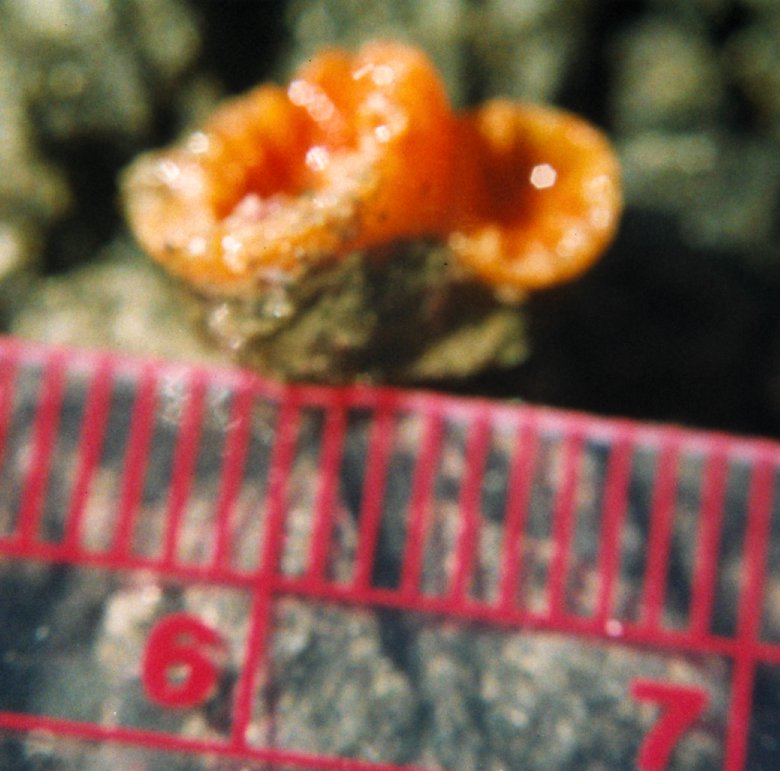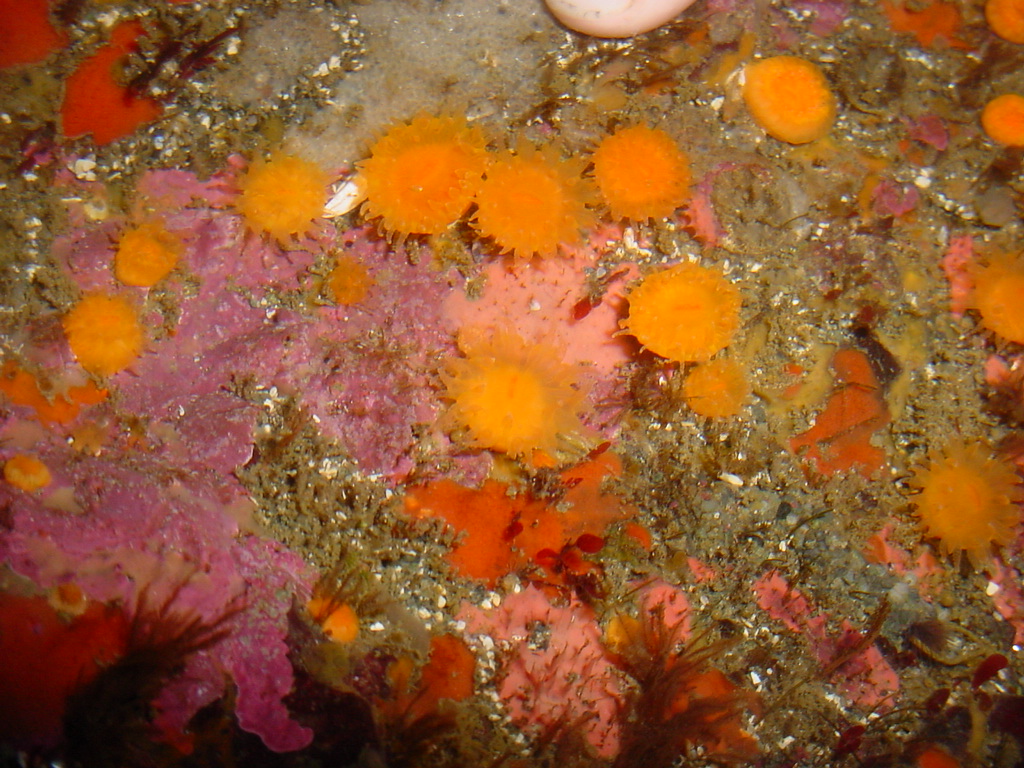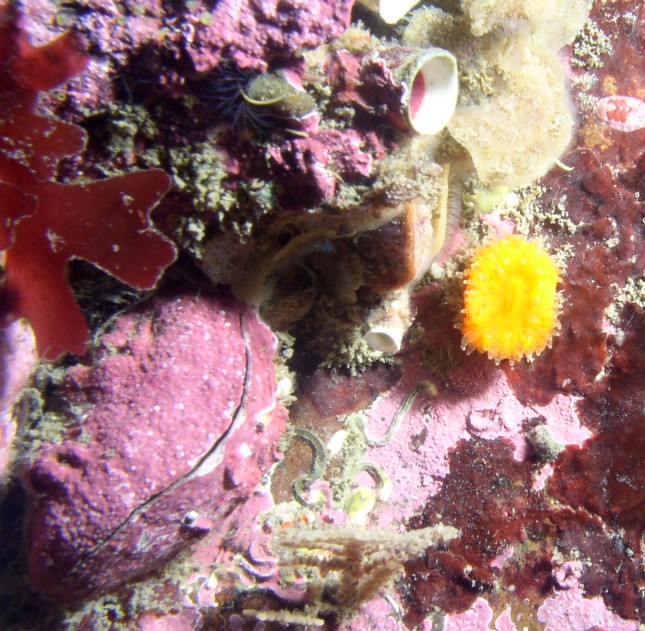Balanophyllia elegans Verrill, 1864Common name(s): Orange cup coral, Orange coral |
|
| Synonyms: |  |
| Phylum Cnidaria
Class Anthozoa Subclass Zoantharia Order Scleractinia Family Dendrophylliidae |
|
| Balanophyllia elegans. San Simeon, CA | |
| (Photo by: Dave Cowles May 1995) | |
How to Distinguish from Similar Species: The only other hard coral in this area, the subtidal Caryophyllia alaskensis, is beige.
Geographical Range: SE Alaska to Baja California
Depth Range: Lower intertidal to 10 m depth
Habitat: Lower rocky intertidal (usually under large boulders or ledges, in sea caves, or in surge channels or deep tidepools) and subtidal; mostly outer coast.
Biology/Natural History: The polyps of this coral are solitary. Typically is found near crustose coralline algae in areas exposed to moderately strong surf. It has no symbiotic algae. Sexes are separate. The eggs are fertilized inside the mother's gastrovascular cavity and develop to planula larvae there. Planulae larvae usually settle within 10 cm of the parent. This is the only common intertidal species of hard coral along our coast. This coral catches prey primarily by nematocysts and spirocysts on its tentacles, but may open its mouth widely and capture some prey with the mesenteries inside its gastrovascular cavity. This species is known to be able to absorb dissolved organic carbon from the water.
| Return to: | |||
| Main Page | Alphabetic Index | Systematic Index | Glossary |
References:
Dichotomous Keys:Flora and Fairbanks, 1966
Kozloff 1987, 1996
Smith and Carlton, 1975
General References:
Kozloff,
1993
Niesen,
1994
O'Clair
and O'Clair, 1998
Scientific Articles:
General Notes and Observations: Locations, abundances, unusual behaviors:

These specimens were in a sea cave at Cape Flattery,
WA.
Diameter is approximately 1 cm.

An underwater photo by Kirt Onthank July 2007. Note the
slitlike
mouth.
The shell to the left is the brachiopod Terebratalia
transversa.
Authors and Editors of Page:
Dave Cowles (2005): Created original page